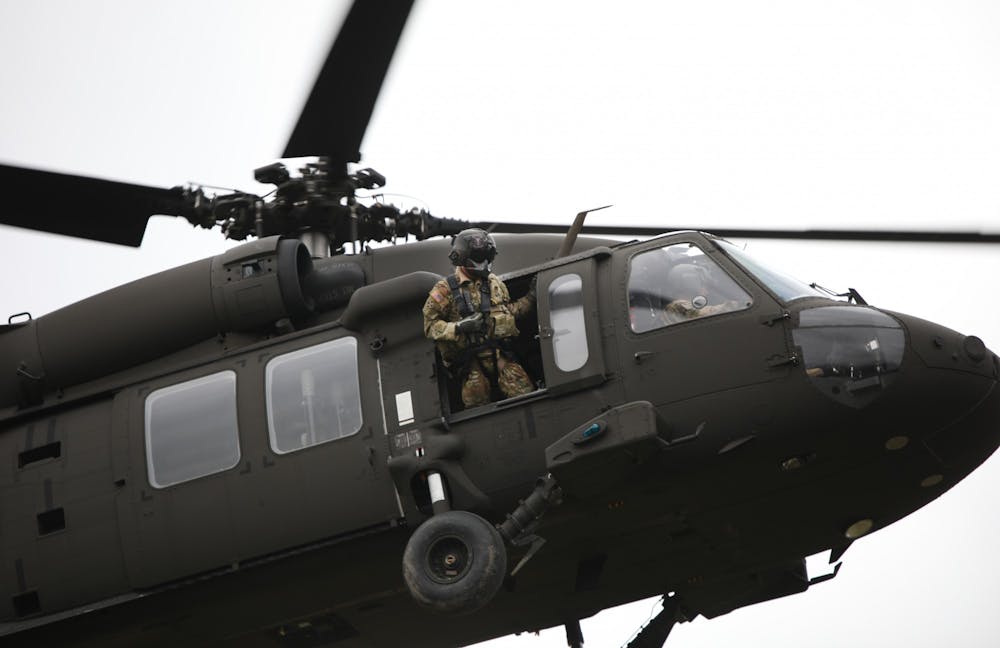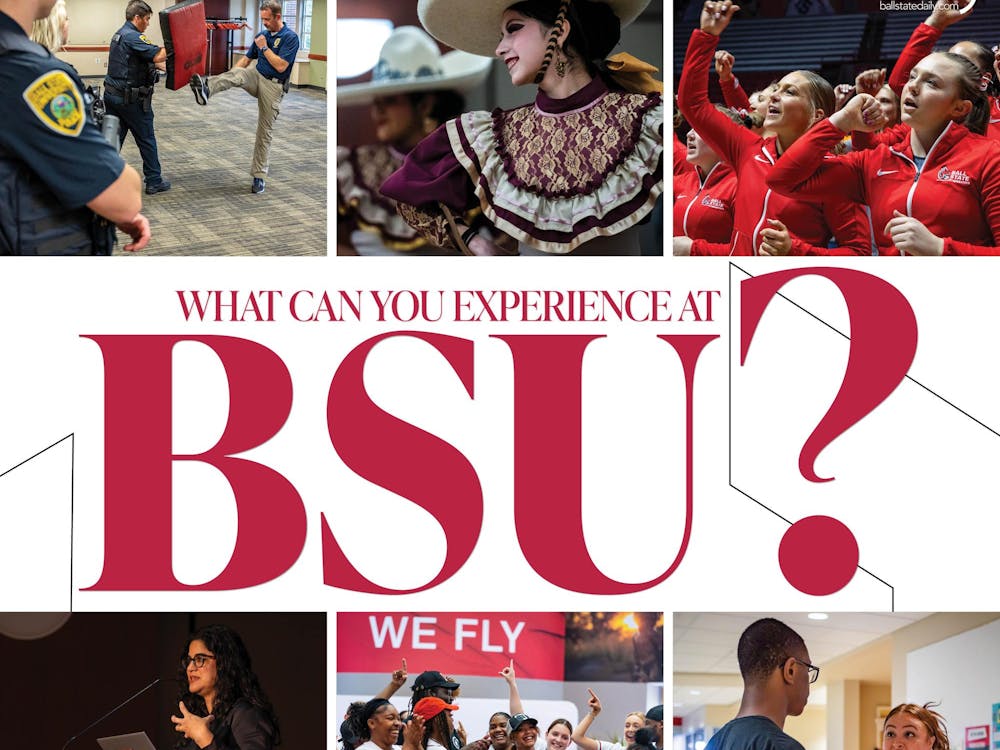When Maddi Dilds, second-year psychology major at Ball State University, graduated from high school about a year ago, she had some “oddballs” thrown her way, she said. A breakup, separation from her friends and acquaintances and an unfamiliar campus all hung over her head during her first semester at Ball State.
However, when she spoke with two National Guard recruiters in the military recruitment office in the Village, she said she saw value in the monetary and career benefits the Army and National Guard offered through the Reserve Officers’ Training Corps (ROTC).
“There’s a lot of people in the [ROTC] program, so I decided to … join the program to really put myself out there,” Dilds said. “Get new experiences under my belt, take chances and stuff like that.”
Now, though she is a young member of the ROTC, in the spring 2023 semester, Dilds is taking the position of first sergeant of Alpha company, a term to describe all the students in Ball State’s ROTC program. She will be leading and directing her peers in their training and assisting officers with administrative tasks for the program.
According to Ball State’s ROTC website, their mission statement is “a cadet at Ball State University is prepared through a challenging four-year curriculum and direct mentorship by established cadre in the profession. Our cadets graduate prepared to enter any organization, work force, or even begin graduate level studies. We produce graduates and leaders of character and a sense of service to a cause bigger than individual.”
Ball State’s ROTC program consists of a series of four basic and four advanced military science courses, accompanying labs, physical training and field training exercises that prepare them for service in the military. Students who complete all four years of the program graduate with a minor in military science and earn the rank of second lieutenant in the Army.
“This is an officer-producing program; a basic officer course that teaches students what they need to know to be an officer in the Army and to take leadership roles,” Nathan Dunn, recruitment operations officer for the ROTC at Ball State, said.
To this end, the ROTC program mimics the cadet chain of command that exists in the Army to give students the experience of following and working up the chain of command, Dunn said.
“It’s the exact structure they’ll find when they go into whatever branch of the military they choose,” he said.
In military science classes, ROTC and military science students learn about this chain of command and the responsibilities of a soldier in each rank. In advanced levels of military science courses, students study administrative roles at the top of the cadet chain.
Students in the program can inhabit these ranks, direct their peers in leadership roles and organize operations and events in administrative roles, Dilds said. Students can take ranks as high as battalion commander, where they begin to serve as a liaison between cadets and cadre, the body of enlisted officers with military experience who advise student leaders in the ROTC.
ROTC students also have two-hour lab classes, not unlike chemistry labs or art studio classes, where the entire company gathers to learn practical skills like land navigation, hand-to-hand combat and squad movements, Dunn said. When it is necessary for students to handle a weapon, they use “rubber duckies” — false rifles that do not fire bullets, Dilds said.
“Our [300-level military science students] teach the labs … ‘cause, being an officer, you do a lot of presentations and you do a lot of briefing,” Dilds said. “It’s an admin position — you’re letting [your company] know, ‘This is going to happen.’ You’re teaching things.”
Dunn said this method of students leading their peers and administrating operations in their third-year and fourth-year is also reflective of operations in the military. Giving students a “taste of being in charge” allows them to develop the skills to lead larger groups of people.
“If [cadets] are going into active duty, they might be put in leadership positions in the Army,” Dunn said. “It’s really about span of control — it’s hard to manage 100 people, so having multiple leaders to keep everyone in line makes it easier on the entire chain.”
The activities an ROTC student participates in is recorded in an Operations Manual Letter (OML) that acts as a resume, Dilds said, describing the cadet’s experience and specialties. If a student plays intramural sports, takes on leadership roles in the ROTC, works as an RA, etc., those add points to their OML that allow them to be considered for higher ranks in the military.
“I want to go to airborne school this summer. Throughout two weeks in the summer … I basically get airborne certified, which is jumping out of planes and parachuting,” Dilds said. “That is also a contribution to the OML.”
According to the Ball State ROTC website, any Ball State student is allowed to take MIL 100 and 200 level courses, but MIL 300 and beyond require the student to commit to eight years of military service. They have choices as to how to fulfill that commitment, Dunn said.
“Some cadets go into active duty, which is basically military all day, every day, but some can also go into the reserves or the National Guard and gather for training one week a month, two months out of the year,” Dunn said.
He also said the ROTC program prepares cadets for either course of service through the wide range of leadership opportunities.
“If a cadet is, say, a business major, what they’re learning in the ROTC is applicable there too,” Dunn said. “Being punctual, building teams, holding meetings, making decisions — all the skills they learn through their training and schooling will help them in the civilian sector.”
Dilds said her adjustment to the ROTC’s rigorous demands was difficult, first struggling to make it to class after physical training taking place at about 6 a.m. Now, after about a year in the program, she finds her work satisfying, she said.
“I’m not sitting down eating chips on the couch all day,” Dilds said. “[Yesterday], we ran, like five miles — last semester … I wasn’t able to run two miles straight, barely even one. There’s things that I didn’t think I was capable of doing that this program helped me do.”
Contact Miguel Naranjo by email at miguel.naranjo@bsu.edu or on Twitter @naranjo678.





